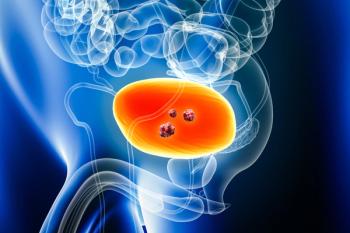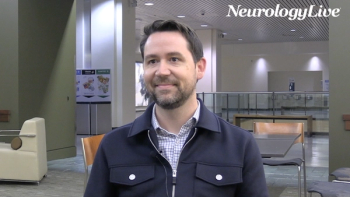
Around the Helix: Cell and Gene Therapy Company Updates – November 19, 2025
Catch up on the latest news, breakthroughs, and announcements from biotechnology companies making advancements in cell and gene therapies.
The cell and gene therapy sectors are growing exponentially, with new players emerging daily and much progress being made both in and out of the lab. CGTLive®’s Around the Helix is your chance to catch up with the latest news in cell and gene therapies, including partnerships, pipeline updates, and more.
Have a cell and gene therapy news update you’d like to share with our editorial team? Tag us on social (@CGT_Live on X, or CGTLive on LinkedIn) and use #AroundTheHelix!
1. Bladder Cancer Gene Therapy Detalimogene Effects 62% CRR at 6 Months Posttreatment
enGene's detalimogene voraplasmid (also known as detalimogene, and previously referred to as EG-70), an investigational nonviral immuno-oncology gene therapy being evaluated for the treatment of high-risk bacillus Calmette-Guérin-unresponsive nonmuscle-invasive bladder cancer with carcinoma in situ, has brought about a 62% complete response rate (CRR) at 6 months posttreatment, according to updated data from the phase 1/2 LEGEND clinical trial (NCT04752722).
2. Stephen M. Ansell, MD, PhD, on Integrating Cell Therapy into Clinical Practice in Oncology
CGTLive® reached out to Stephen M. Ansell, MD, PhD, the chair of the Division of Hematology, coleader of the Hematological Malignancies Program, and interim chair of the Department of Oncology at Mayo Clinic, to get his insight on practical considerations regarding the adoption of cell therapy in oncology/hematology.
3. Patient Treated in Trial for Intellia’s Transthyretin Amyloidosis Gene Editing Therapy Nex-Z Dies
A patient treated with Intellia Therapeutics’ gene editing therapy nexiguran ziclumeran (nex-z, also known as NTLA-2001) for transthyretin amyloidosis with cardiomyopathy in the context of the phase 3 MAGNITUDE clinical trial(NCT06128629) has died, after being hospitalized following a grade 4 liver adverse event.
4. Where are the Biggest Bottlenecks in Cell and Gene Therapy?
Deborah Phippard, PhD, the chief scientific officer of Precision for Medicine, and Renier Brentjens, MD, PhD, the chair of the department of medicine and the deputy director at Roswell Park Comprehensive Cancer Center, discussed cost and patient access, which they view as some of the biggest bottlenecks facing cell and gene therapy today.
5. Sarepta's Elevidys Gets Boxed Warning for ALI and ALF
The FDA has updated the prescribing information for Sarepta Therapeutics' Duchenne muscular dystrophy (DMD) gene therapy delandistrogene moxeparvovec-rokl (marketed as Elevidys). Among the several changes are the addition of a boxed warning for risk of acute serious liver injury (ALI) and acute liver failure (ALF), removal of eligibility for nonambulatory patients, and expanded guidance for prescribers.
6. Xenetic and Scripps Investigator Lengthen Collaboration
Xenetic Biosciences has added 4 months onto its ongoing research collaboration with Alexey Stepanov, PhD, the institute investigator at Scripps Research. The collaboration between Xenetic and Stepanov's lab is aimed at combining Xenetic's systemic DNase I candidate XBIO-015 with chimeric antigen receptor T-cell (CAR-T) therapy for the treatment of hematologic malignancies and solid tumors. "The data generated to date continues to be encouraging and warrants further evaluations," James Parslow, the interim CEO and chief financial officer of Xenetic, said in a statement. "The expertise and dedication of the Scripps Research team to this program further validates our belief in DNase I to improve therapeutic responses in patients undergoing CAR T-cell therapy and we look forward to continued collaboration and innovation together."
Newsletter
Stay at the forefront of cutting-edge science with CGT—your direct line to expert insights, breakthrough data, and real-time coverage of the latest advancements in cell and gene therapy.











































